As part of our stay in Kaohsiung, we took a day trip to Fo Guang Shan (佛光山), or “Buddha’s Light Mountain.” Fo Guang Shan is an international organization promoting Humanistic Buddhism with branches in five different continents around the world. The headquarters of the organization in Kaohsiung is the biggest Buddhist monastery in Taiwan.
Direct buses to Fo Guang Shan run from outside Kaohsiung’s Zuoying THSR station and take around 45 minutes. We were looking for a purple bus that we read about online, but found another one for the same price of TWD 70 (USD 2.30) though we took the purple bus back to Kaohsiung at the end of the day.
Fo Guang Shan Buddha Memorial Center (佛光山佛陀纪念馆)
All buses from Kaohsiung drop off at the Memorial Center, a huge area that took us a few hours to walk around. First, we entered the Welcoming Hall, which has information, restaurants, and is the entry point into the rest of the Memorial Center.
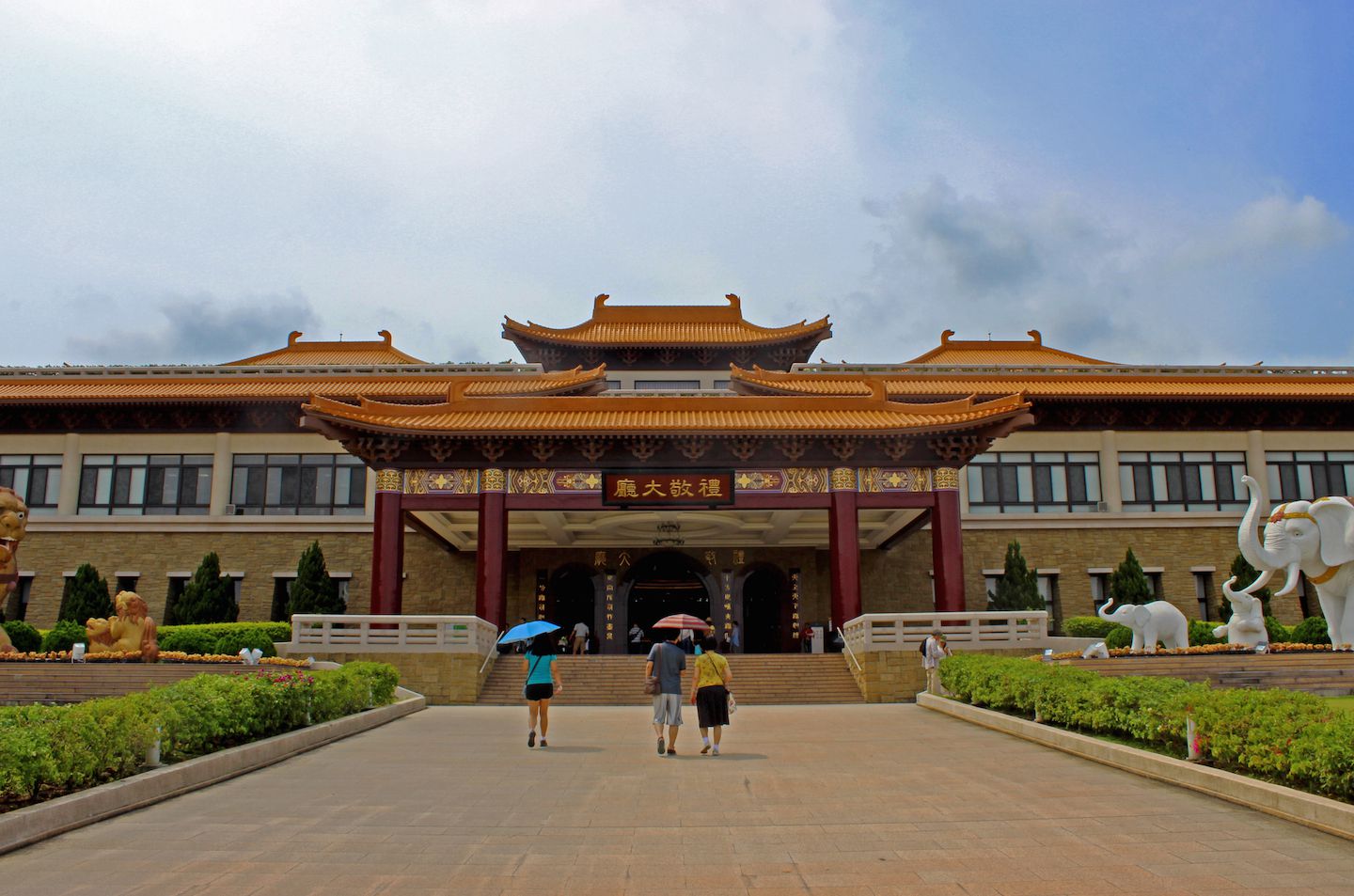
A path connects the Welcoming Hall directly to the Fo Guang Buddha. On either side of the path, eight Chinese-styled pagodas symbolize the Noble Eightfold Path, four on each side. We went inside a few of the pagodas and found small museums, educational programs for children, souvenir shops, etc. Each pagoda was also a nice air-conditioned break from the sweltering and shade-less heat outside.
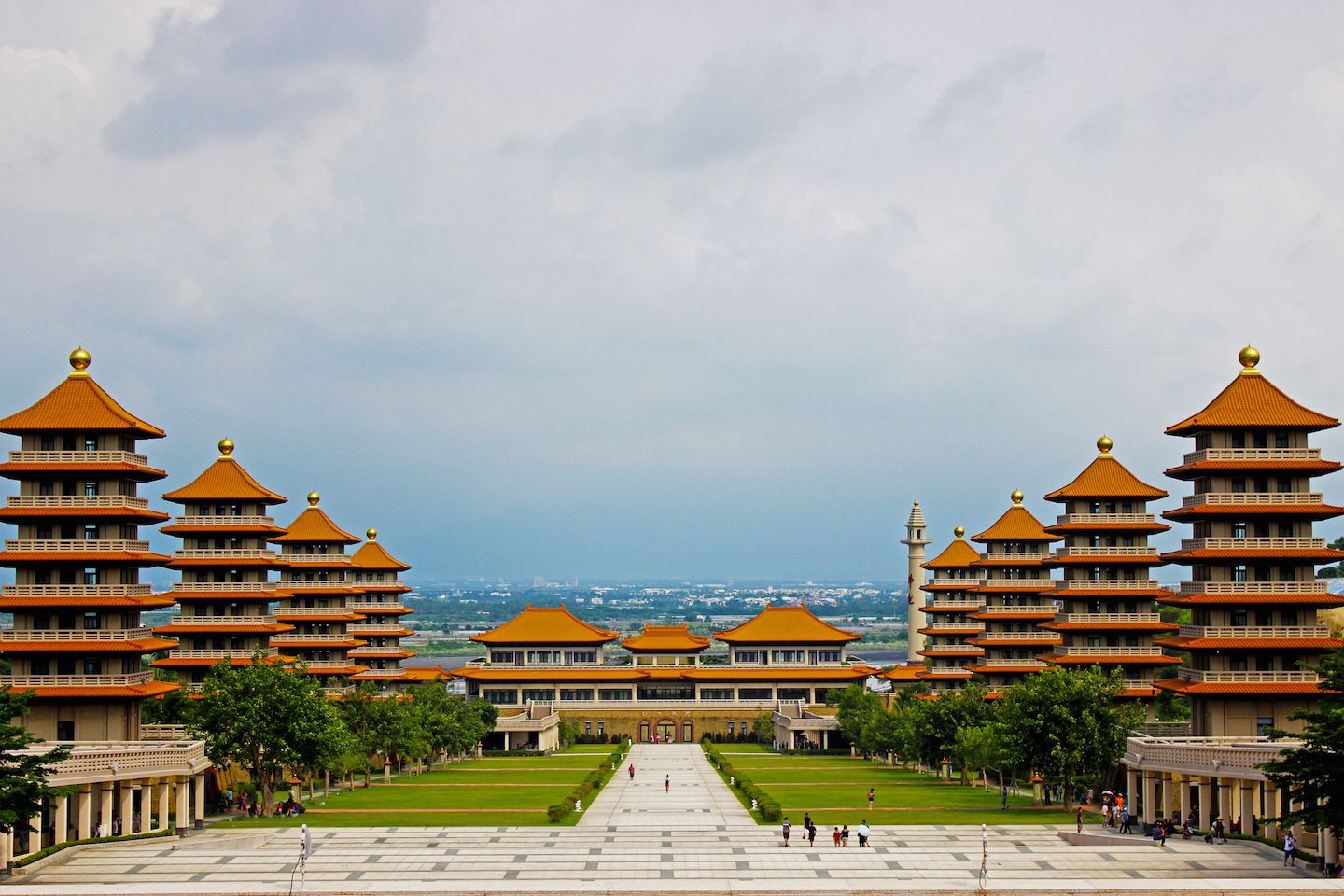
Once we walked past the pagodas, there was one more structure between us and the Fo Guang Buddha. A large pyramidal structure with four stupas in each corner, it reminded me of the Taj Mahal – except the dome is replaced by a pyramid and the minarets are replaced by stupas. The Fo Guang Buddha almost looks to be on top of this structure, though it is actually directly behind it. The four stupas symbolize the Four Noble Truths.
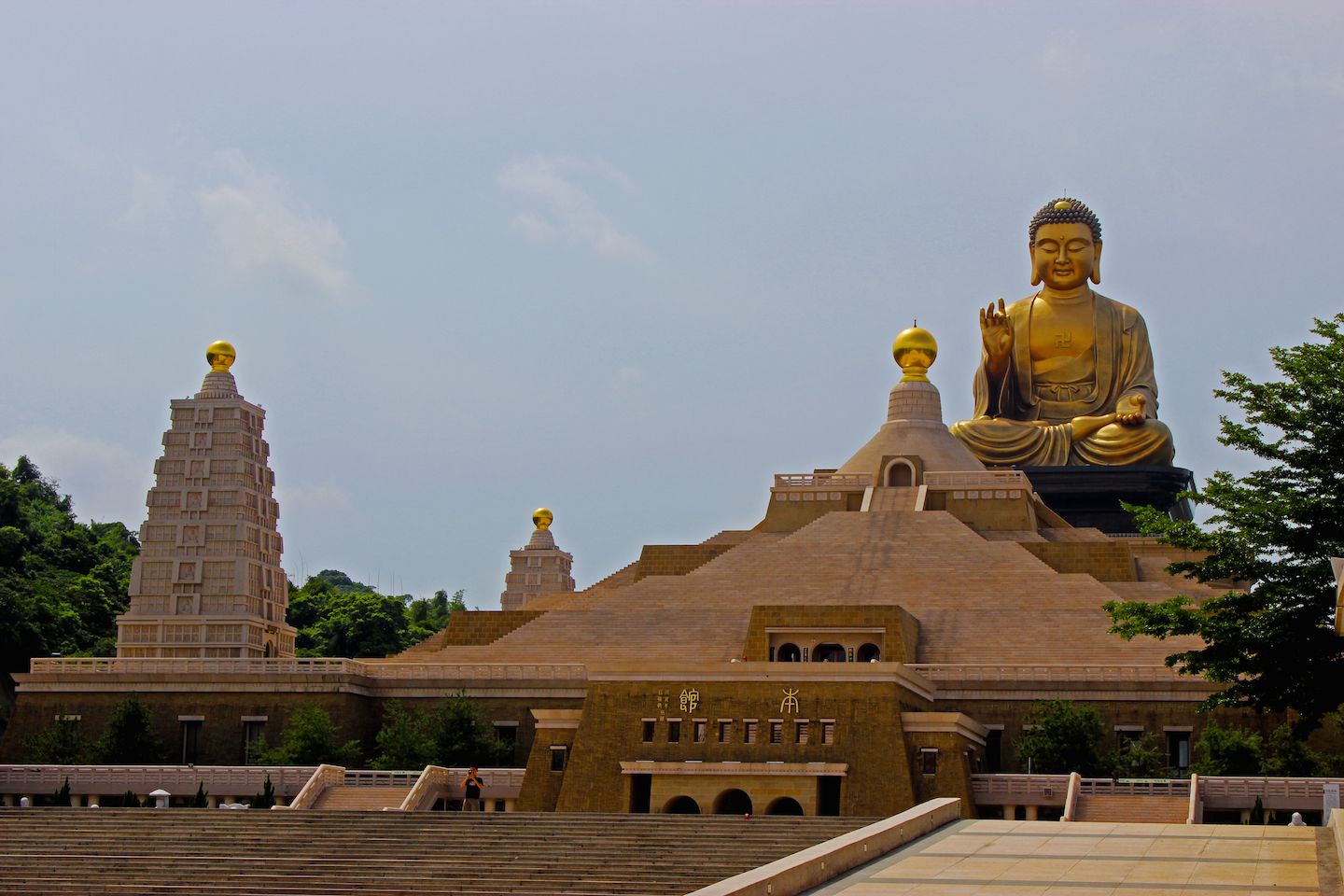
We got as close to the Fo Guang Buddha as you could, but it still seemed far away. This Buddha has a very different feel than the Tian Tan Buddha in Hong Kong, where we were literally right below the Buddha and you feel like you could almost touch it. Here the Buddha looks bigger, but it is sitting above a raised, inaccessible platform. This was as close as we could get:
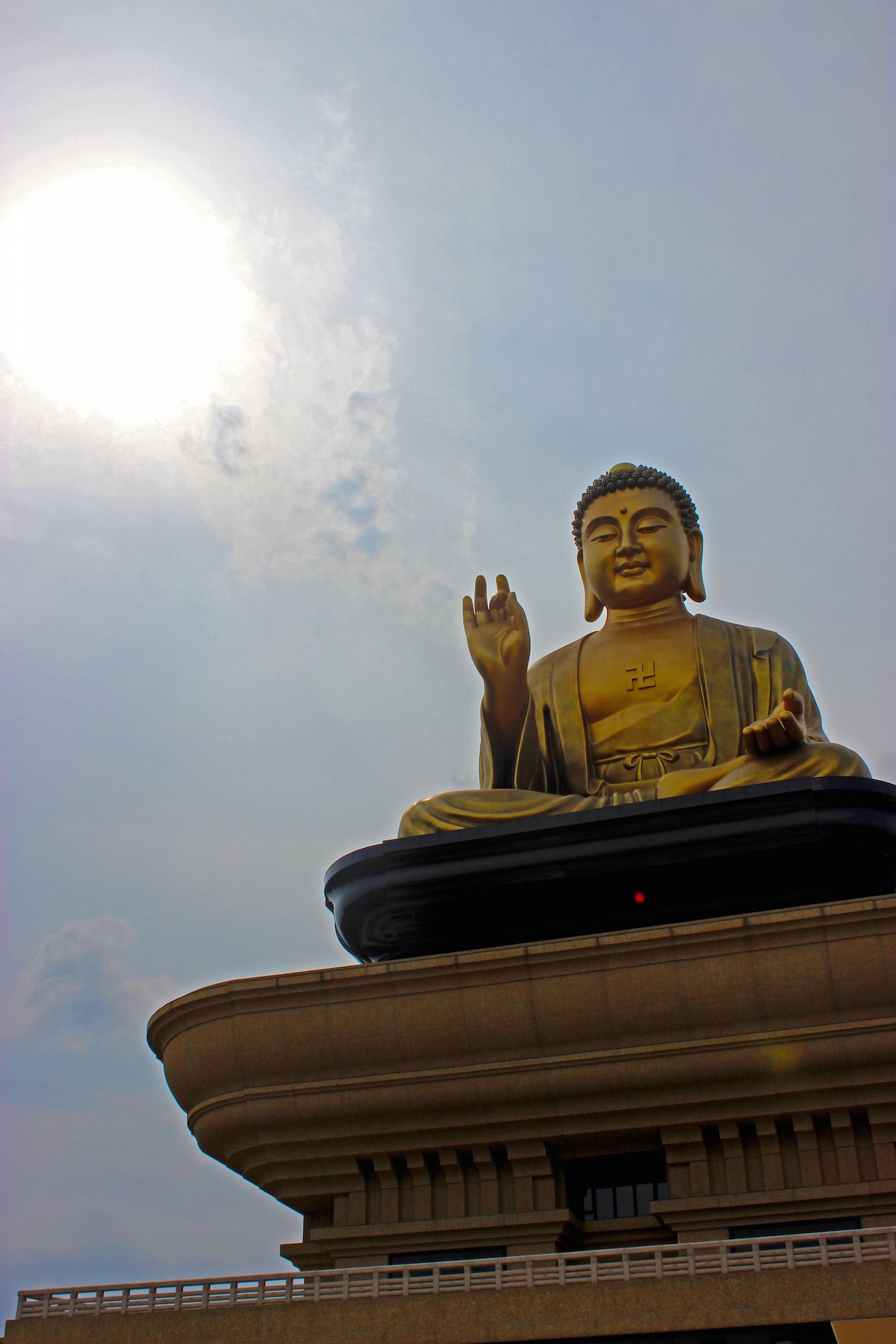
Fo Guang Shan Monastery (佛光山)
From the Memorial Center, the Fo Guang Shan Monastery is a short few minutes drive, or 600m walk up a steep hill. This is where Fo Guang Shan originally began with the monastery, schools, cemetery, etc. To the right of the entrance was my favorite part of the whole day, the Land of Buddhas. The Land of Buddhas is an area with hundreds of smaller Buddhas standing in endless rows, seemingly everywhere. They are all surrounding a tall statue of a standing Amitabha Buddha, looking down upon the rest. It was quite the sight. I had never seen so many golden Buddhas in one place. It felt like we were surrounded by enlightenment.
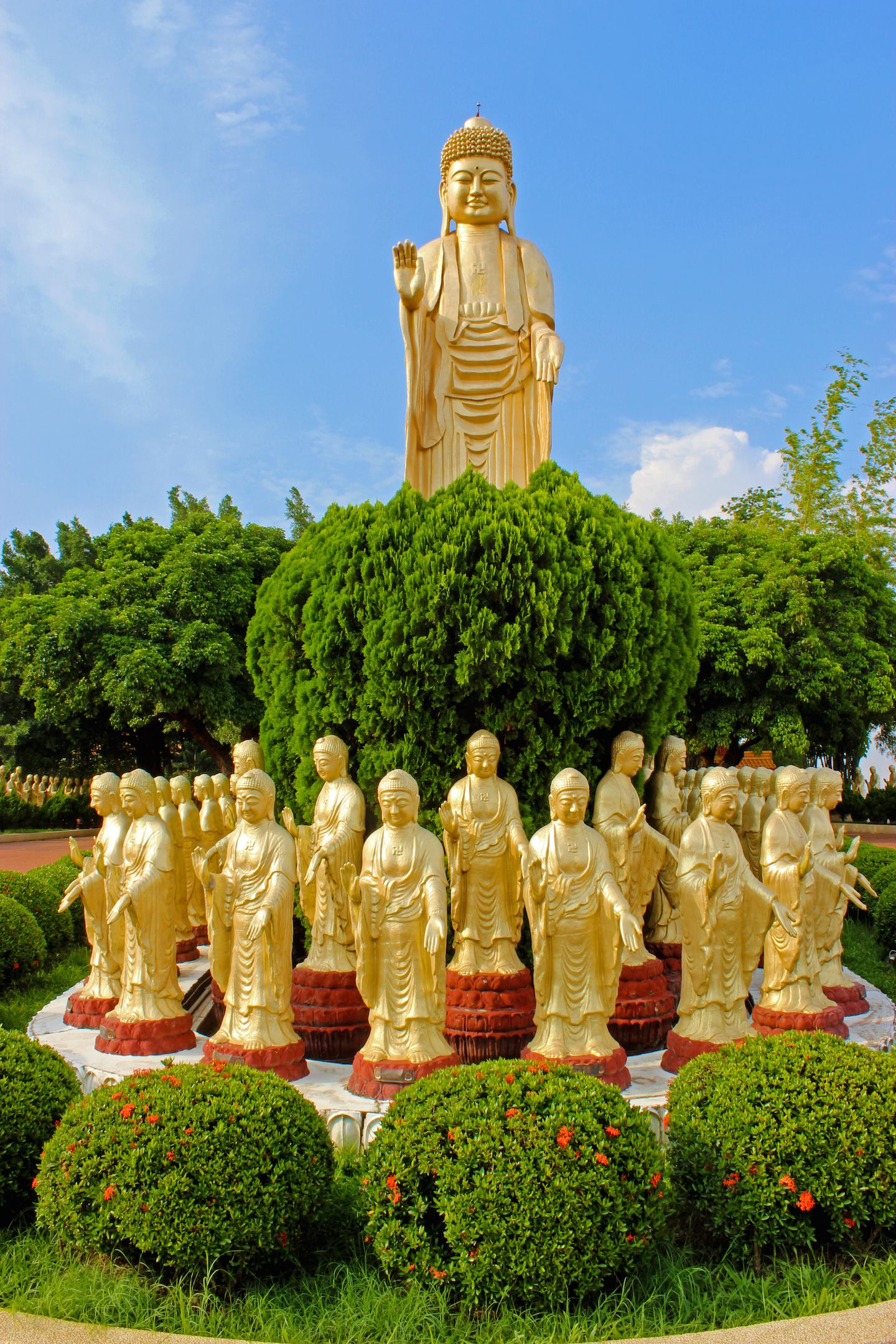
Our last visit of the day was to the main monastery. No pictures allowed inside, so we only caught a shot from the outside. After we took off our shoes to enter, we stepped into the expansive room that is the inside of the main monastery with very tall ceilings. Three large sitting Buddhas greeted us, surrounded by thousands of mini Buddhas statues set into the walls. It was such a calm and serene atmosphere. The only thing on the floors were cushions so visitors could kneel and worship Buddha and Buddha’s teachings.

I enjoyed our day spent immersed in Buddhism. If I could have changed anything, it would have been: 1) I wish my Chinese reading skills were way better so I could read all the quotes around Fo Guang Shan. 2) It was also evident that neither Carlos nor I knew much about Buddhism. Had we been more informed, we probably would have gotten more out of the experience, as there was so much religious history and culture in a place like this. Just like visiting the churches in Europe, it’s one thing to admire the art and architecture, but it’s a whole new level of appreciation to understand the meaning behind it all.
For more pictures from Fo Guang Shan, visit the gallery!

